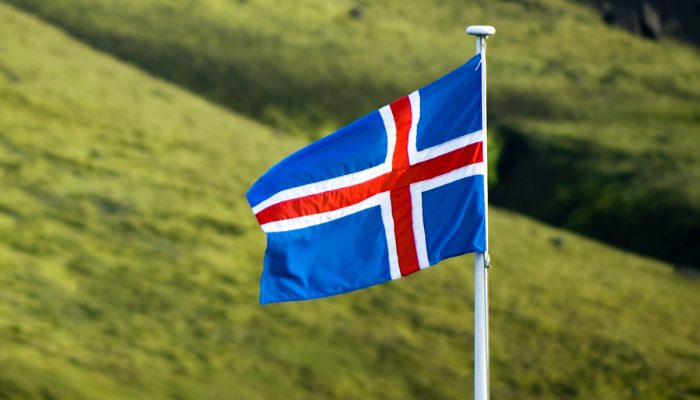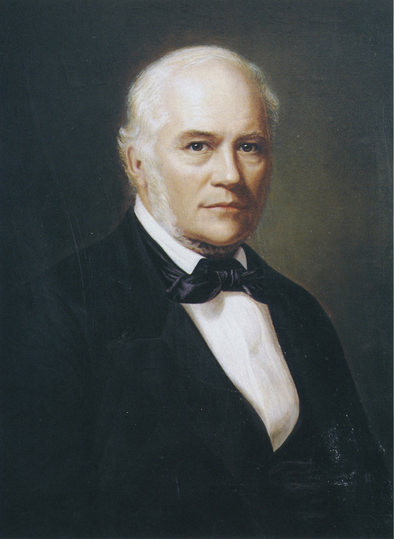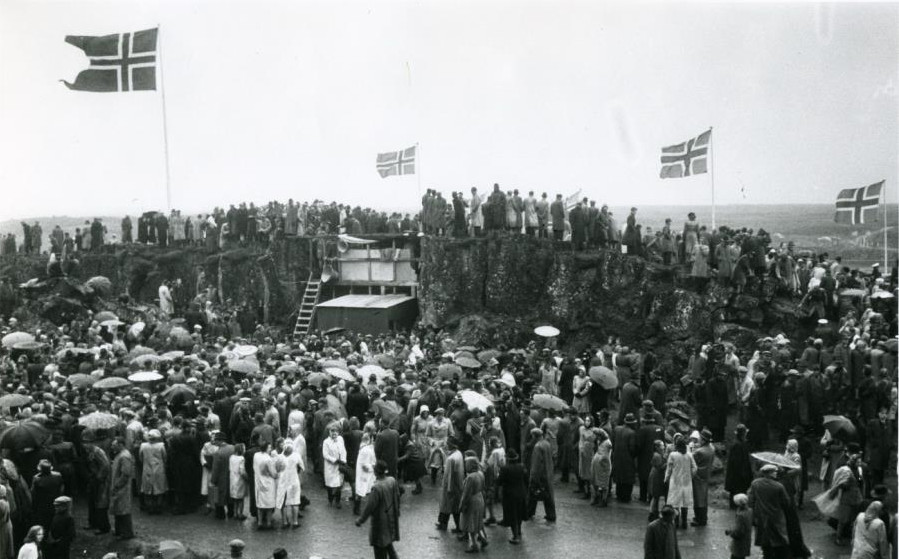June 17th, known as the Icelandic National Day, “Þjóðhátíðardagurinn”, is a day filled with celebrations all over the country from parades to speeches, live entertainment and family activities, it is a fun filled day all about celebrating Iceland. And this year celebrations are extra special as it marks the 80th year of Iceland being an independent republic after gaining independence from Denmark on June 17th, 1944!
To celebrate this milestone in Icelandic history here is all you need to know about the history of Icelandic National Day and the celebrations that occur on this special holiday.

Iceland’s Journey to Independence
While one might assume that the powerful Viking’s always had rule over their beautiful country you might be surprised to learn that Iceland lost its independence back in 1264 when it became part of the Norwegian crown. This occurred during a civil war known as the Age of the Sturlungs which was a 42-year period of internal conflict in Iceland. During this time there was conflicts between powerful chieftains in Iceland, one of which was from the most powerful family clan in Iceland at the time named the Sturlung clan.
It is said that the internal conflicts happening during the Age of the Sturlungs weakened Iceland, a weakness that the King of Norway took advantage of to extend his influence to Iceland which eventually resulted in Iceland coming under Norwegian rule. The Age of the Sturlungs story is further documented in the Sturlunga saga, a saga which can still be read today in a manuscript at the University of Iceland.
Shortly after Iceland came under Norwegian rule Norway went on to united with Sweden and Denmark in the 13th century. The Nordic states were united under one alliance, the Kalmar Union, a union that lasted from the end of the 13th century to 1523. On its dissolution, Iceland became a Danish colony where it would remain under the Danish crown until 1944.
During the 17th and 18th century Iceland’s economy was under strict rules from the Iceland-Danish trade monopoly which had a negative impact on Iceland’s economy. Natural disasters and a decline in the population did not help the situation in Iceland during this time. However, it wasn’t until the 19th century when a rise of nationalism around Europe that an independence movement began to get momentum in Iceland.

Independence Movement leader Jón Sigurðsson.
Photo credit jonsigurdsson.is
During this time independent advocates in Iceland worked to successfully re-establish the national Icelandic parliament, while peacefully campaigning for independence from Denmark. This independence movement was pioneered by the independence movement leader Jón Sigurðsson. In 1918 the movement got its first major win with the Act of the Union, in which Iceland became recognized as a fully sovereign state becoming the Kingdom of Iceland.
The Act of the Union gave Iceland the ability to establish their own flag while Denmark continued to represent their foreign affairs and defense. Iceland went on to open their first embassy and establish the Supreme court of Iceland in 1920 giving Icelanders power over the three branches of government. In 1940 the Act was up for revision and had a three-year time frame before the Act would be revoked. It just so happened that during this three-year period Denmark was occupied by Germany making it so that the Act was not revised, and on December 31st, 1943 the Act expired.
Starting on May 20th, 1944 Icelanders began a four-day vote on if they should establish a republic separate of Denmark. The Icelandic population general consensus with 97% in favor was to seek complete independence from Denmark. With over 95% in favor of the new republic, Iceland gained its independence on the 17th of June 1944.

Icelanders celebrating Iceland gaining independence at Þingvellir in 1944. Photo credit Sarpur.
The date 17th of June was chosen to coincide with the birthday of Jón Sigurðsson to give recognition to his efforts towards Iceland’s independence movement. To celebrate the first Icelandic National Day in 1944 a celebration was held at Thingvellir where Iceland’s Althing was formed in 930. Fun fact, Iceland’s parliament is the world’s oldest known parliament!
Since gaining independence Iceland has had 6 presidents over the past 80 years with the current president being Guðni Thorlacius Jóhannesson. Now, Halla Tómasdóttir has been elected as the seventh president and will become the second woman to hold this office, starting on August 1, 2024.

Icelandic National Day Celebrations
While some countries celebrate their independence day with fireworks, traditional dances and games, Iceland celebrates their independence with poetry reading, exactly what you would expect from the land of Viking’s right?
Whilst a poetry reading traditionally does occur on Icelandic National Day, there is much more festivities to be had to celebrate around the country.
Iceland’s capital city of Reykjavik kicks off the celebrations with the ringing of all the church bells in the city at 10:00am. At 11:00am an opening ceremony is held at Austurvöllur square where the President of Iceland lays a wreath at the monument of Jón Sigurðsson. The Prime Minister will then give an opening address, followed by “the Lady of the Mountain”.

The Lady of the Mountain. Photo credit City of Reykjavík. Source 17juni.is
The “Lady of the Mountain” is a special tradition where one woman each year is selected to be “Lady of the Mountain” to serve as the female incarnation of Iceland, a national symbol so to speak. This woman dresses in the national costume and recites a poem or speech of her choosing at the opening ceremony.
Following the opening ceremony, a parade makes it way through downtown Reykjavik, an event that occurs in most urban areas around the country as well. The parade kicks off with a brass band followed by Icelandic horses and flagbearers from the Icelandic scout movement.

A parade marching through Reykjavík on Iceland's Independence Day. Photo credit reykjavik.is
In most urban areas around Iceland you will find an afternoon full of events and family entertainment to enjoy. In the capital city, Reykjavik, the afternoon is packed full of fun and the streets come alive with Icelanders out and about taking in all the entertainment.
The day celebrations are especially fun for the younger Icelanders with bouncy castles, circus entertainment, balloons all over the place, face painting and seeing their favorite performers around town, it is a fun family day.
While children love this day there are plenty of other events for all ages to enjoy, such as the Strongest Man and Woman competition, performers ranging from comedians to dancers, and concerts with Iceland's top performers that last into the evening. There is a joke that it isn’t the 17th of June without some rain, but the rainy weather doesn’t stop Icelanders from getting out and celebrating their country’s independence.
Happy National Day in Iceland!
If you are intrigued by Iceland and want to visit, you should read our article about the best time to visit Iceland.